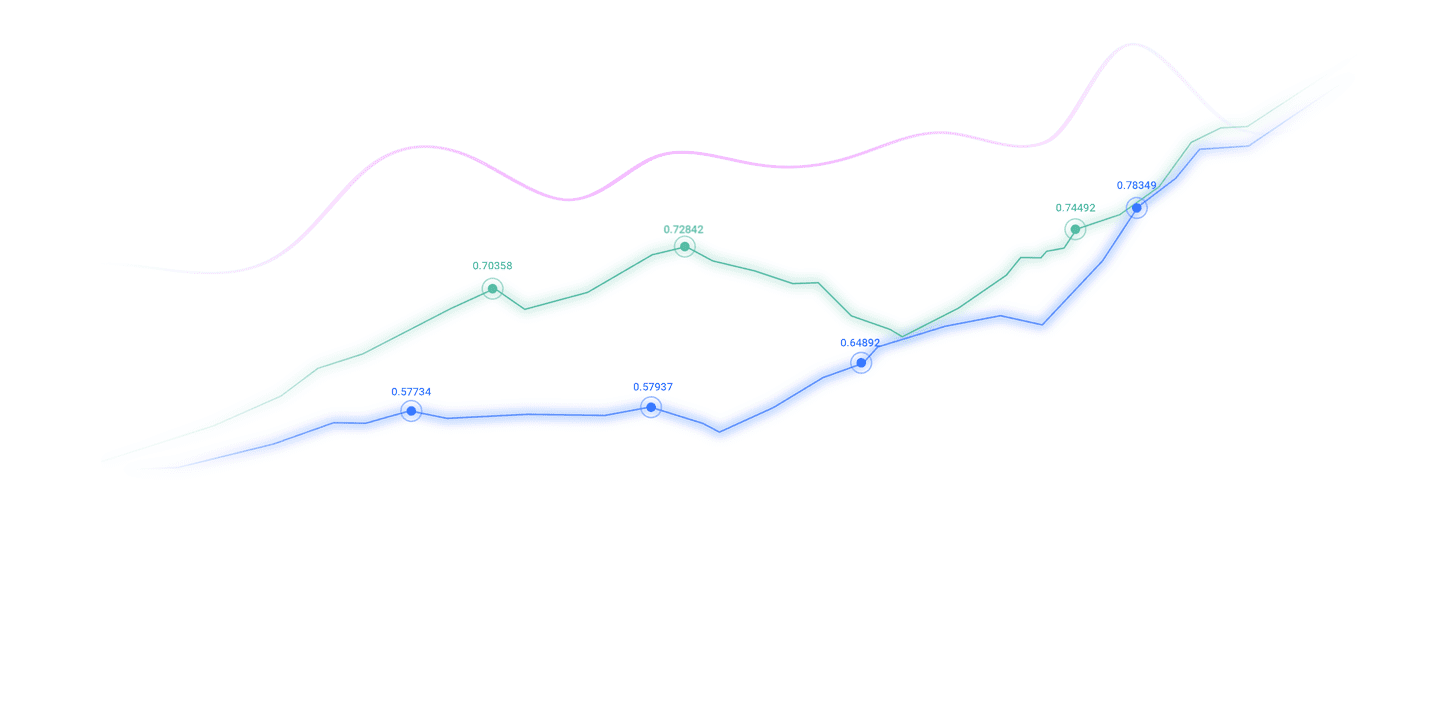Trusted by over 15 Million Traders
The Most Awarded Broker
for a Reason
CATEGORIES
market news
Trapped in the “dollar spider web” and unable to escape? Global central banks are launching a gold revolution
Wonderful introduction:
Green life is full of hope, beautiful fantasy, hope for the future, and the longed-for ideal is the green of life. The road we are going to take tomorrow is lush green, just like the grass in the wilderness, releasing the vitality of life.
Hello everyone, today XM Forex will bring you "[XM Foreign Exchange Market Analysis]: Trapped in the "USD Spider Web" and unable to escape? Global central banks are launching a gold revolution." Hope this helps you! The original content is as follows:
The global financial system is falling into a dilemma of coexistence of "structural dependence" and "strategic distrust" on the US dollar. This fundamental tension is reshaping the reserve management behavior of central banks and has distinct but interrelated impacts on the long-term trends of the U.S. dollar and gold.
The www.xmmen.complex relationship between central banks and global reserve currencies
A well-known former central bank governor pointed out at the OMFIF London conference: "There is no substitute for the dollar..." The conference was held for David Marsh's new book "Can Europe Survive?" 》press conference held.
But the real question is not whether the dollar will lose its dominance, but how central banks and sovereign investors respond to the risks of such heavy reliance on the dollar at a time when politics, technology and markets are moving in new and contradictory directions.
Geopolitics has always affected capital flows, and now it is directly shaping foreign exchange reserve management decisions. The weaponization of tariffs, restrictions and payment systems cannot be ignored – they have become a filter through which asset allocation decisions are made.
A guest at the book launch described that many countries feel trapped in the "dollar spider web": trapped in a system that is not trusted but unable to escape. The United States' use of restrictions and extraterritorial powers is pushing more countries to experiment with alternative payment systems and digital currencies, but the infrastructure of global finance - from pricing and settlement, debt markets to foreign exchange transactions, is still firmly centered on the US dollar.
Why alternative currencies fail
Most central banks still hold the majority of their assets in U.S. dollars, and for many this remains an inevitable choice. Liquidity, market depth and security provided by U.S. dollar assetsThe benchmark is currently unmatched by any www.xmmen.competing currency.
Although the euro is the main denomination currency, it cannot be said to have global status. The lack of a unified capital market and truly pan-European safe assets has limited its role to the regional level. As one participant said: "Without sufficient safe bonds and a deep and liquid pan-European market, the euro has no hope of becoming a truly global currency - and this will be difficult to achieve in the short term."
The RMB is seen as a potential long-term player (Figure 1), while other currencies are too small. Even if there is a diversification trend away from the dollar, it will only occur at the margins.
Gold’s strong return
As the limitations of each currency become more apparent, gold has once again become the core of serious issues. In the past two years, central banks of many countries have added record amounts of gold to their reserves, citing gold's neutrality, anti-restriction properties, and conflict-risk functions (Figure 2).
At the new book launch conference, guests pointed out that "the beauty of gold lies in its inherent intrinsic value." In addition to emotional and sentimental factors, gold also has a valuation standard recognized by all countries, which is truly amazing. Because of this, several speakers have claimed that the gold rush has just begun.
The rest of the decision-makers took a cautious approach, emphasizing that gold lacks income attributes and has limited liquidity, and there are significant risks in large-value transactions. For most institutions, the core challenge is how to balance their value as a safe-haven asset with their investment shortcomings.
Looking to the future, participants pointed out at the press conference that tokenized gold may become an innovative direction, but it is still mainly at the conceptual level. A guest pointed out that physical gold is heavy and difficult to move, but "putting it on a digital track can achieve 24/7 uninterrupted trading."
Technology and Artificial Intelligence
Technological development has added new uncertainties to the reserve management landscape, while also bringing potential for change. New payment systems and digital settlement tools may accelerate changes in money usage habits, although the technology itself does not create credit or safe assets. As one participant said: "Technology will not replace the fundamental status of credit and security assets, but once the change starts, technology will significantly accelerate its process."
Artificial intelligence has been applied at a more subtle level. Central banks are applying it for scenario modeling, risk diagnosis and operational resilience assessments. For now, it is still an auxiliary tool rather than a disruptive force, but the market has high expectations for it and has priced in productivity gains that have yet to materialize. In OMFIF's recent dialogue with a number of central banks, many institutions emphasized the need to cultivate internal professional capabilities, not only to seize potential opportunities, but also to deal with increasingly severe cyber attacks and the risks of over-reliance on external suppliers.
Reserve Management in a Divided World
Reserve management agencies are facing two major practical dilemmas: they cannot give up the dollar, and they cannot ignore its risks. Increasing gold holdings, experimenting with alternative payment systems, and paying more attention to political risks—these measures all show that countries are adapting to a more multipolar world.world. But none of this currently changes the fact that the dollar remains at the heart of the system.
OMFIF, in partnership with Bank of New York Mellon, Bridgewater Associates and Capital Group, has conducted a series of confidential dialogues with reserve managers from Europe, Latin America, Africa and Asia. These discussions are based on the findings of Global Public Investor 2025 and aim to delve more deeply into how central banks are responding to the rapidly changing economic and geopolitical landscape.
Relevant insights will be further discussed at the OMFIF Roundtable on October 16 during the International Monetary Fund-World Bank Annual Meeting in Washington. It will bring together authoritative voices from the Bank of Korea, the Bank of Finland and the Bank of Lithuania. The 2025 Global Public Investor Working Group Report, which condenses the results of these dialogues, will be released online on November 20, 2025.
Impact on the US dollar: short-term strength and long-term concerns
In the foreseeable future, the US dollar’s status as the primary reserve currency will remain stable, which provides fundamental support for the value of the US dollar.
In the long term, the United States’ weaponization of the financial system is systematically questioning the fundamental credibility of the U.S. dollar as a “neutral” trading medium.
It is precisely because of the above-mentioned crisis of trust that central banks in various countries have strong incentives to "try alternative payment systems and digital currencies" and actively "increase gold holdings." Although these actions are gradual, they represent a clear strategic direction - reducing dependence on the U.S. dollar. This process is slow, but once the trend is established, it will continue to erode the long-term hegemony of the US dollar.
Impact on gold: The beginning of structural buying
In the context of doubts about the trust of the US dollar, gold’s neutrality and anti-restriction characteristics have attracted much attention. It is not affected by the policies or sanctions of any single country, becoming the central bank’s ultimate insurance against a “divided world”.
In a world where trust is www.xmmen.compromised, this store of value beyond sovereignty becomes extremely attractive.
The "record accumulation of holdings" in the past two years is no accident. It reflects the fundamental change in the central bank www.xmmen.community's view of gold: from a traditional asset with low yields to an indispensable strategic safe-haven asset. This continued inflow of official demand provides a solid floor for gold prices.
Gold prices directly benefit from the US dollar’s crisis of confidence and geopolitical divisions. As long as the two major trends of de-dollarization and geopolitical uncertainty continue, gold’s role as the “ballast stone” of the monetary system will continue to strengthen, and its long-term upward price trend will have solid fundamental support.
The above content is all about "[XM Foreign Exchange Market Analysis]: Trapped in the "USD Spider Web" and unable to escape? Global central banks are launching a gold revolution". It was carefully www.xmmen.compiled and edited by the XM Foreign Exchange editor. I hope it will be helpful to your trading! Thanks for the support!
In fact, responsibility is not helpless or boring, it is as gorgeous as a rainbow. It is this colorful responsibility that createsThat’s the wonderful life we have today. I will try my best to organize the article.
Disclaimers: XM Group only provides execution services and access permissions for online trading platforms, and allows individuals to view and/or use the website or the content provided on the website, but has no intention of making any changes or extensions, nor will it change or extend its services and access permissions. All access and usage permissions will be subject to the following terms and conditions: (i) Terms and conditions; (ii) Risk warning; And (iii) a complete disclaimer. Please note that all information provided on the website is for general informational purposes only. In addition, the content of all XM online trading platforms does not constitute, and cannot be used for any unauthorized financial market trading invitations and/or invitations. Financial market transactions pose significant risks to your investment capital.
All materials published on online trading platforms are only intended for educational/informational purposes and do not include or should be considered for financial, investment tax, or trading related consulting and advice, or transaction price records, or any financial product or non invitation related trading offers or invitations.
All content provided by XM and third-party suppliers on this website, including opinions, news, research, analysis, prices, other information, and third-party website links, remains unchanged and is provided as general market commentary rather than investment advice. All materials published on online trading platforms are only for educational/informational purposes and do not include or should be considered as applicable to financial, investment tax, or trading related advice and recommendations, or transaction price records, or any financial product or non invitation related financial offers or invitations. Please ensure that you have read and fully understood the information on XM's non independent investment research tips and risk warnings. For more details, please click here


































































































